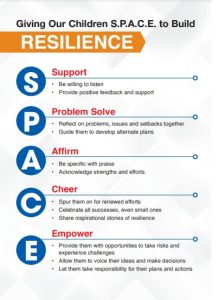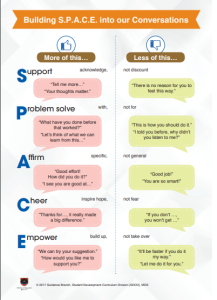You may have heard of the Blue Whale game and Thirteen Reasons Why (13RW), or them trending on your social media feed. Such content has been circulating and may negatively influence our children to view suicide as a viable way to deal with their problems, or even romanticise or glamourise the act of suicide.
Thirteen Reasons Why (13RW) is a fictional story released on Netflix surrounding the traumatic events recounted by a high school student who chose to end her life by suicide. The sinister but unverified Blue Whale game allegedly incites teenage players to carry out tasks involving self-harm in a 50-day period and culminates in a final task to commit suicide in order to win the game.
While it is difficult to verify if suicide deaths are caused by online games, such games with dark themes related to self-harm or suicide are still of concern.
Viral content about self-harm or suicide is worrying and raises important questions about media influence and the power of social media. As parents, we play a very critical protective role that can minimise the negative effects of such exposure.
- Teach our children media literacy to discern between fake and real events
- Help our children discern and avoid online gaming or social communities that could present risks of suicide contagion
- Take stock of the media influences that our children are exposed to
- Engage in conversation with our children to find out what they have been watching or playing online
- Encourage our children to post sensitively on social media so that they do not contribute to rumours or reports that sensationalise suicide
As we talk to our children, we need not be hyper-vigilant or transfer our anxiety to them, but instead communicate our concern for their well-being and a commitment to support them through any struggles they may be facing. Together, we can help them build their resilience to overcome challenges without resorting to suicide or maladaptive behaviour.
Here are some pointers on how to talk about issues related to anxiety, distress and suicide.
1. First, know the warning signs
When our children are going through distress, they send out warning signs through their behaviour. But are we catching the signals for help being sent out? Look out for these signs and read more about distress signs and behaviour.
- Displaying out-of character behaviour
- Injuries that are unexplained
- Sudden changes in appearance, interests or habits
- Temperamental changes
- Rebellious/ aggressive behaviour
- Extended absence/ deliberate social withdrawal
- Struggling to pay attention/ increased lethargy
- Sending/ posting moody or morbid messages (including expressions of death)
2. Talk about your child’s thoughts and feelings
Start with some questions to show concern for your child’s well-being, such as, “I noticed that you…. Is there anything you would like to share?” or “Is there something troubling you?”
Take your child’s comments seriously. Refrain from minimising what they are feeling or telling them that they should not feel negative about something. That could pose a barrier for them to open up further. Instead, be open and empathetic by showing that you are trying to understand what they are thinking and feeling. Don’t judge them or their thoughts. Listen, and be caring and kind.
3. Discuss what your child has seen or heard
If your child shares that he/she has watched a movie or played a game that has themes of self-harm or suicide, discuss his/her thoughts and feelings. Share that while people may identify with the characters in a movie or story, there are many healthy ways to cope with the issues faced and acting on suicidal thoughts is not one of them. Most people who have distressful experiences will reach out to someone, talk to others, and seek help. They can also find other positive ways of coping such as exercising, finding ways to de-stress and doing breathing exercises.
4. Don’t be afraid to ask your child a direct question about suicide
Contrary to what we may think, asking them such questions does not put the idea in their head but invites them to share what they are feeling without stigma or shame. Direct questions could include, “Are you having thoughts about killing yourself?” or “Do you wish you could end your life?”
If you suspect your child is in danger, get help immediately from SOS 1800 221 4444 or speak to your child’s School Counsellor. Ensure your child’s physical safety and explain that you cannot keep the secret but need to break confidentiality to get the help that they need. Remind them that the thoughts of suicide are just thoughts and that they need not act on them. The impulse to do so may pass after a while.
5. Use the S.P.A.C.E tips
The S.P.A.C.E tips can guide your conversation and foster resilience in the longer term.
(Click to download)
6. Encourage a healthy lifestyle and a wide range of coping strategies
Encourage your child to develop a sleeping routine to help them get a good night’s sleep. For example, waking up and getting to bed at the same time, avoiding caffeine during lunchtime and shutting down electronics before bedtime.
Physical activities can help relieve stress and provide a good distraction from worries. Find a physical activity to carry out together with your child if your child is struggling to get active, or play sports with friends. Eating well can also help with sleep and general health and wellbeing. A well-balanced diet helps the body and brain to function well.
Other coping strategies include talking with people they trust, keeping a journal, drawing and expressing themselves through art, practising relaxation and deep breathing. It is helpful to build up a toolbox of a variety of coping strategies.
7. Encourage your child to be a positive influence
You can also encourage your child to be a voice of hope and positive influence for his/her peers. Your child can play his/her part to look out for warning signs if a peer is distressed or at risk of suicide. Encourage your child to refer the friend immediately to a trusted adult for help.








